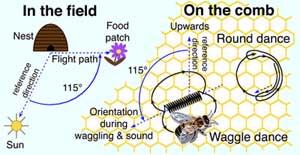A key role in synchronizing daily rhythms to the day/night cycle has been traced to a light-sensitive protein in the eye, by knocking out the gene that codes for it. Mice lacking a gene for the photopigment melanopsin show a dramatic deficiency in their ability to regulate their circadian rhythms by light. The discovery, by National Institute of Mental Health (NIMH) grantees, helps unravel the heretofore elusive mechanisms by which day/night cycles regulate such rhythms in mammals. NIMH grantees Igna
Vanderbilt University Medical Center investigators are reporting success with a novel gene therapy approach. Working with cells grown in the laboratory, the group is the first to repair a defective gene and demonstrate that the resulting protein product is functional, said Dr. Alfred L. George Jr., senior author of a study published Dec. 15 in the Journal of Clinical Investigation.
Although use of the approach in patients is still years in the future, the findings are an important step in sh

Honeybees communicate by dancing. The dances tell worker bees where to find nectar. A UC Riverside study reports that under natural foraging conditions the communication of distance and direction in the dance language can increase the food collection of honeybee colonies. The study also confirms that bees use this directional information in locating the food sources advertised in the dance.
Based on work done in 2001 in the Agricultural Experiment Station at UC Riverside, P. Kirk Visscher,
Forget the robot child in the movie “AI.” Vanderbilt researchers Nilanjan Sarkar and Craig Smith have a less romantic but more practical idea in mind.
“We are not trying to give a robot emotions. We are trying to make robots that are sensitive to our emotions,” says Smith, associate professor of psychology and human development.
Their vision, which is to create a kind of robot Friday, a personal assistant who can accurately sense the moods of its human bosses and respond appropriate
It is commonplace for patients with Acute Lung Injury (ALI) to be injected with a dye, known as contrast material, before undergoing a CT (computerized tomography) scan of their lungs. Contrast material helps enhance the image so that doctors can evaluate the state of a patient’s lungs. New research published in Critical Care shows that using contrast material could worsen the condition of patients suffering from ALI because it causes the lungs to fill up with fluid, making it more difficult for
Researchers have discovered the first genetic component of a biochemical pathway in the brain that governs the indelible imprinting of fear-related experiences in memory.
The gene identified by researchers at the Howard Hughes Medical Institute at Columbia University encodes a protein that inhibits the action of the fear-learning circuitry in the brain. Understanding how this protein quells fear may lead to the design of new drugs to treat depression, panic and generalized anxiety di